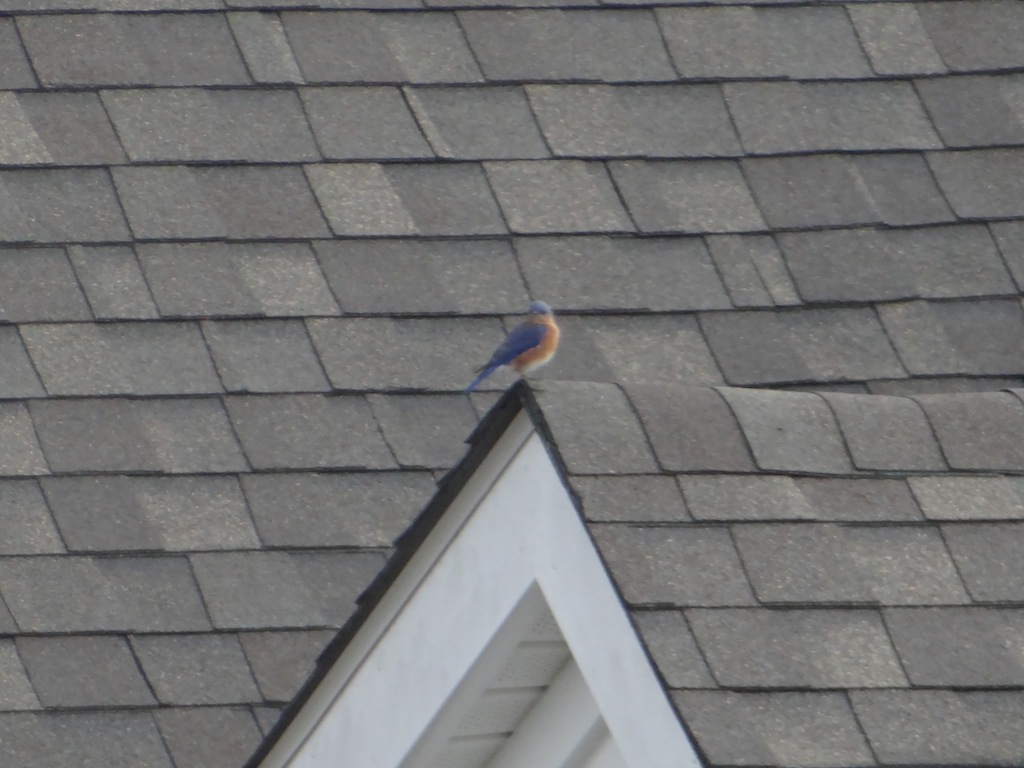Mid-November morning. I was admiring the Westminster cityscape from my picture window and watching some birds roosting on a telephone wire when I caught a flash of blue in a wing flip. As two of them flew toward the Kwazon cherry, the orange-y breast feathers immediately identified them as Bluebirds.
I knew we had bluebirds around since 2005. My “yard” then was an 8.5 acre hillside of mostly tall grasses and the bluebirds seemed to congregate around a shed roof at the top of the hill to catch the morning sun. Since the great earth moving for a housing development, I seldom saw them except very occasionally on the phone wires in front of our house. But, I was surprised to see them here so late in the season.
So I looked up “Eastern Bluebird”. It appears that after nesting season ends, around September, family flocks of juveniles and adults will begin to congregate and forage in woodsy areas for nuts, fruits and berries. They like to feed from Grey Dogwood, Smooth Sumac, Snowberry, Viburnums, Serviceberry, Hawthorne, crabapples and cherries. They’ll be joined by other unrelated bluebirds. The trend is to move in a southward direction according to foodstuff availability.
Eastern Bluebirds are classified as “partial migrants”. That is, if the weather is mild and the foraging is good, they won’t travel far. But, if there is no food, they have to migrate. The worse the northern conditions, the further south they will go while trying to avoid feeding competition from other bluebird flocks. In warmer climes, they can be year round residents.
Apparently, scientists have discovered that some bluebirds seem to lack the genetic programming that dictates migration. During the worst of winter conditions, bluebirds seek shelter from winds, ice and snow so aren’t readily visible to bird watchers, not being out in the open. The favored winter foods are juniper berries and mistletoe–so much so that bluebirds are considered dispersal agents for these plants. Bluebirds will eat purchased mealworms in the winter and will also partake of suet dough mixes BUT these are not balanced foods and can cause health problems like gout and deficiencies that affect moulting if the birds become too reliant on the feeder. So, offer a variety: raisins, shelled peanuts and hulled sunflowers and suet alongside mealworms and fresh water. Then cut back as the season warms so they can begin to forage naturally.
If the birds survive winter conditions, they have an advantage of being first to return to breeding grounds to get best dibs.The return northward generally begins in the January-February time frame and is keyed to insect emergence in the rising warmth.



